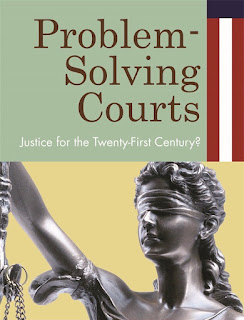Thoughts on Community Justice 2014
I have just returned to New York after four days in San Francisco for Community Justice 2014, the international summit that we put together with the California court system and the Bureau of Justice Assistance. This was the third such gathering that we have hosted in recent years, following similar events in Dallas and Washington DC.
There were only a few hundred participants in the conference, but the diversity was staggering -- seven countries, dozens of different cities and a wide variety of disciplines (judges, prosecutors, defenders, probation officials, community groups, academics, etc) were represented in San Francisco. This was no accident. One of the things that we were trying to communicate when we created the agenda was a broad-minded vision of community justice. Rather than creating a rigid definition of community justice and then patrolling the borders, our approach has been to try to open our doors and welcome in a variety of programs using diverse means to pursue similar ends. In San Francisco, this meant incorporating speakers devoted to diversion, restorative justice, and crime prevention through environmental design among other topics. Indeed, the community courts that attended were each unique in their own way. Some handle minor offending while others adjudicate more serious cases. And some focus on discrete neighborhoods while others take on whole cities as their catchment area.
For all the diversity on display in San Francisco, there was a palpable sense of community at the summit. While the various speeches and panels were informative, I think much of the value of the conference took place in the hallways and during the breaks as attendees compared notes, shared war stories, and brainstormed solutions to common problems. Awhile back we did a survey of criminal justice leaders and learned that old-fashioned face-to-face encounters remain the primary way that new ideas spread from one place to another. At one level, this is kind of depressing given the undeniable cost and effort that go into putting together an event like Community Justice 2014. On the other hand, I find it somewhat heartening that even in an era of cell phones and video technology, people still want to come together and connect with one another.
For my part, I am proud to be part of a small but energetic international community that is attempting to reform the justice system and repair damaged communities by making greater use of alternatives to incarceration and enhancing the treatment of defendants. I look forward to our next gathering.


